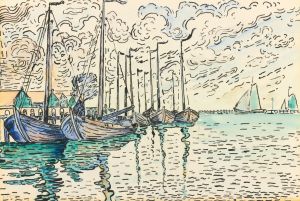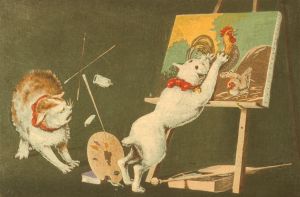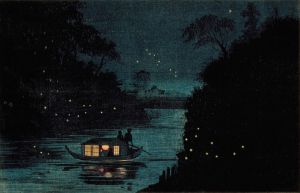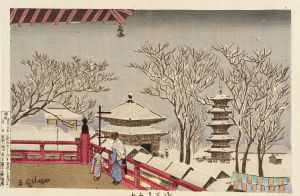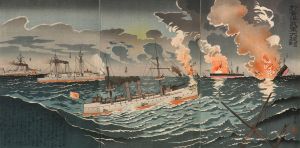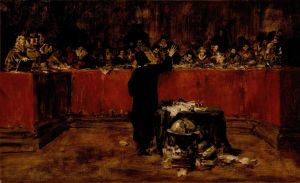
Struggling Hard on the Battleship Hatsuse in the Harbor of Port Arthur
A hand-painted replica of Kobayashi Kiyochika’s masterpiece Struggling Hard on the Battleship Hatsuse in the Harbor of Port Arthur, meticulously crafted by professional artists to capture the true essence of the original. Each piece is created with museum-quality canvas and rare mineral pigments, carefully painted by experienced artists with delicate brushstrokes and rich, layered colors to perfectly recreate the texture of the original artwork. Unlike machine-printed reproductions, this hand-painted version brings the painting to life, infused with the artist’s emotions and skill in every stroke. Whether for personal collection or home decoration, it instantly elevates the artistic atmosphere of any space.
"Struggling Hard on the Battleship Hatsuse in the Harbor of Port Arthur" is a woodblock print created by the Japanese artist Kobayashi Kiyochika. This artwork is part of a series of prints produced during the Russo-Japanese War (1904–1905), a conflict between the Empire of Japan and the Russian Empire over territorial disputes in East Asia, particularly in Korea and Manchuria. Kiyochika, known for his ukiyo-e prints and his depictions of modern warfare, created this piece to document and dramatize events from the war.
The print illustrates a scene involving the Japanese battleship Hatsuse, which was one of the most advanced warships in the Imperial Japanese Navy at the time. The Hatsuse was a pre-dreadnought battleship built in the United Kingdom and commissioned in 1901. During the Russo-Japanese War, the ship was deployed to support Japan's naval operations, particularly in the siege of Port Arthur, a strategically significant port on the Liaodong Peninsula controlled by Russia.
The artwork captures a moment of intense struggle aboard the Hatsuse. While the exact event depicted in the print is not specified, the ship is historically known for its tragic loss on May 15, 1904, near Port Arthur. On that day, the Hatsuse struck two naval mines laid by Russian forces. The explosions caused catastrophic damage, leading to the sinking of the battleship and the loss of over 450 crew members. This incident was a significant blow to the Japanese Navy during the early stages of the war.
Kiyochika's print reflects his ability to combine traditional Japanese woodblock printing techniques with modern subject matter. His works often emphasized the drama and heroism of war, aligning with the patriotic sentiments of the time. The composition of the print likely includes dynamic imagery of the ship, its crew, and the surrounding chaos, though specific details of the visual elements are not provided here.
As with many of Kiyochika's war prints, this piece served both as a form of wartime propaganda and as a historical record of Japan's military efforts. It exemplifies the intersection of art and history, offering insight into how the Russo-Japanese War was represented and remembered in Japanese visual culture.






